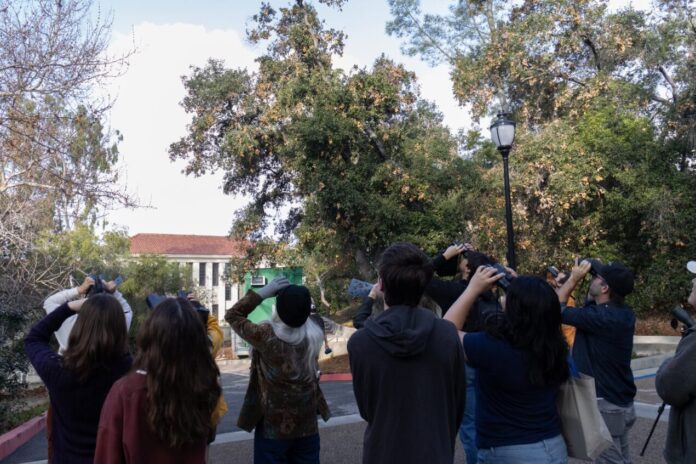
Feb. 27, 8 a.m., the knotted trees of the Sycamore Glen whispered against a cool, dry LA morning breeze. A group of around 20 students, faculty and community members gathered on the pebbled landing just outside the glen. They were about to embark on a bird walk, hosted by Occidental’s Moore Laboratory of Zoology, a museum and research lab founded in 1951. The sun was bright, and the birds chirped among the leaves.
Russell Campbell, a research technician at the lab and LA native, prepared to lead the group, binoculars and bird scope in hand. Biology professor and Director and Curator of the Moore Lab John McCormack stood by him, ready to provide aid. According to Campbell, the weather was ripe for good birdwatching.
The homegrown Angeleno said he took up birdwatching five years ago, prompted by an assignment for an ornithology class during his time at Oregon State University. However, Campbell said he had always been fascinated by nature, despite growing up in urbanized neighborhoods.
“I’ve always been interested in wildlife but never really felt connected to it when I was growing up,” Campbell said. “I grew up in South Central [LA] — Hawthorne, Compton.”
According to Campbell, from before he could remember, he always found time to observe wildlife wherever possible.
“When I was really young, [my parents] would take me to the local grocery store parking lot because there’s so many gulls,” Campbell said. “And apparently, I was really excited about it.”
Campbell said that, now, if he could, he would spend every waking moment out in nature, birdwatching.
“I could say [that] I want to be birdwatching or being out in the field all the time,” Campbell said.
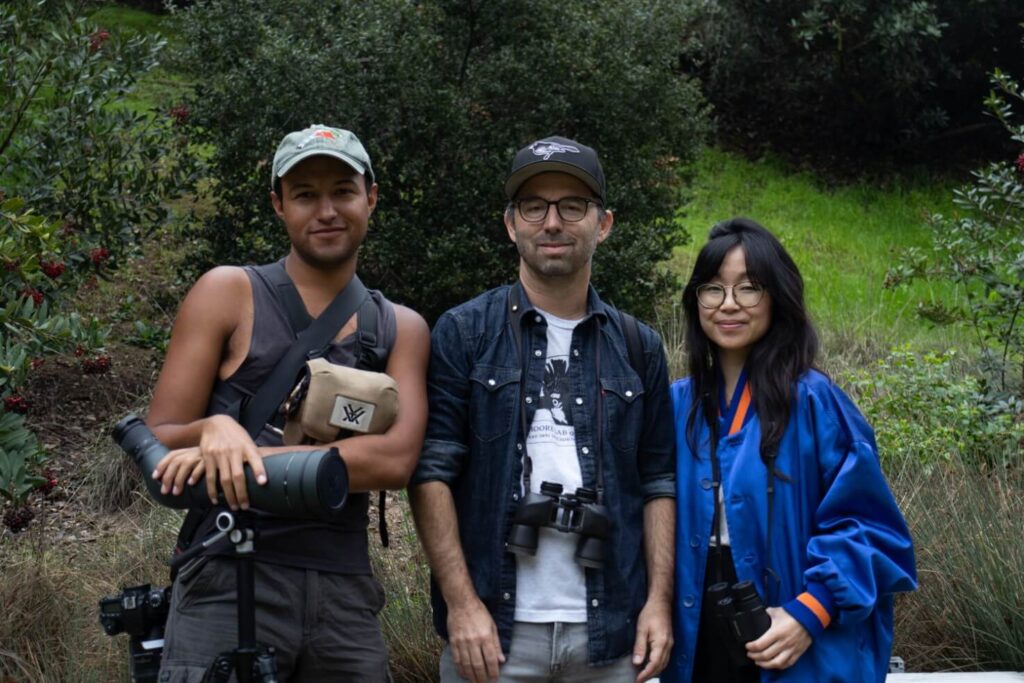
The walk began, and the group was immediately greeted by a nesting mother bird.
“There’s a hummingbird building her nest right there,” Campbell said, gesturing to a tree in the glen. “She’s probably picking up some spider webs, some soft material.”
The walk proceeded up the path beside Stewart-Cleland Hall. Along the arbored path, the group stopped for a bird perched on a nearby sycamore tree, and McCormack took the lead.
“A Western tanager,” McCormack said, referring to the bird in the sycamore. “Female, yellowish bird, of medium size.”
While on the path, the group also witnessed a male hummingbird’s dive. The bird stalled in the air for a few moments, then dove straight down, emitting a loud chirp. According to McCormack, male hummingbirds make that chirp with their wings at the bottom of their dive.
“It makes that noise with its wings, with air going through the feathers,” McCormack said. “Not a peep that it makes with its throat.”
After stopping for the hummingbirds and the tanager, the walk continued to Coons Road, where the group observed a small bird flying around a pine tree.
“A Townsend’s warbler,” Campbell said, referring to the bird. “Warblers will often have a significant portion of yellow. [They’re] highly sought after for birders because they’re so colorful and tiny and cute.”
The group raised their heads and their binoculars, mouths open and eyes staring through their lenses. According to McCormack, the popularity of the warbler has led to a common physical ailment among birdwatchers constantly straining to catch a glimpse of the bird, called “warbler neck.”
“You get pain in your neck because you’re sitting, looking up for so long,” Campbell said.
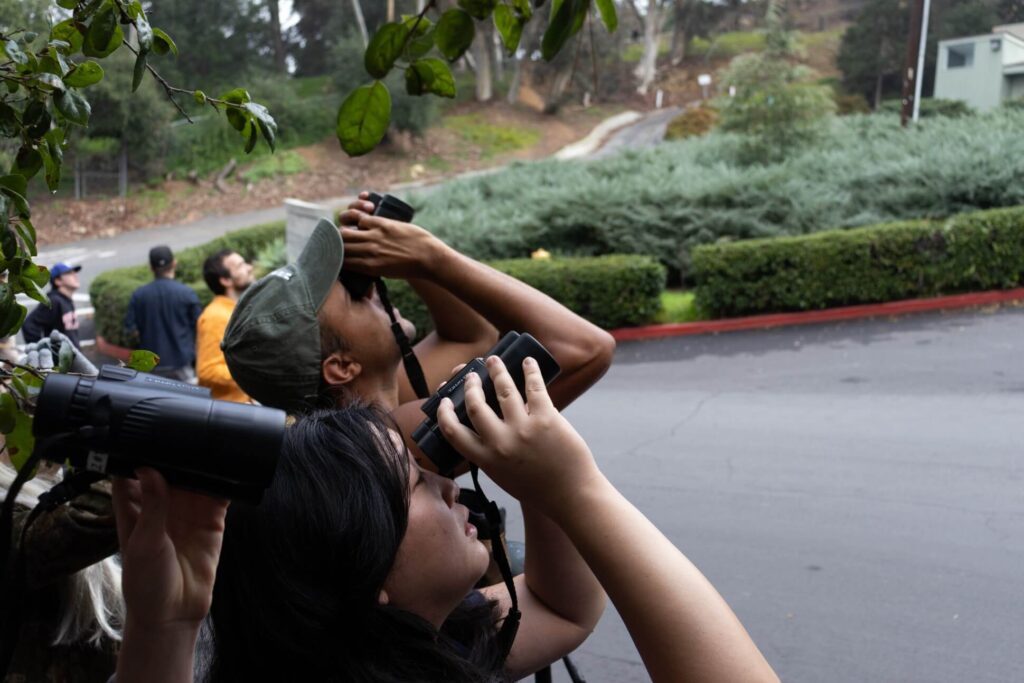
According to McCormack, male birds tend to have brighter-colored feathers than females due, partly, to sexual competition for mates.
“Part of it goes back to the fact that sperm are more numerous than eggs, so it’s usually the males that are competing in some way,” McCormack said. “In birds, it’s usually [about] being brightly colored to attract the female.”
However, Campbell said that to identify a bird, birdwatchers usually go by sound, though this can get difficult with certain birds.
“Most birds, you can tell from sound,” Campbell said. “But there are cases where it can be tough. Like the Townsend’s warbler and the yellow-rumped warbler have pretty distinct calls, but they’re really brief.”
The group continued down the road and a line of trucks passed by. McCormack said man-made noise, like the kind made by motor vehicles, can impact a bird’s call.
“City noise will affect birds in terms of their singing,” McCormack said. “There’s a study of white-crowned sparrows during the COVID shutdown that saw that they completely modulated their song and started singing into frequencies that city noise usually occupied. They were able to be like, ‘I don’t have to scream anymore.’”
Along Coons Road, the group saw a mélange of birds, including red-crowned parrots, a black phoebe, a Nuttall’s woodpecker and a California scrub jay with a peanut in its beak.
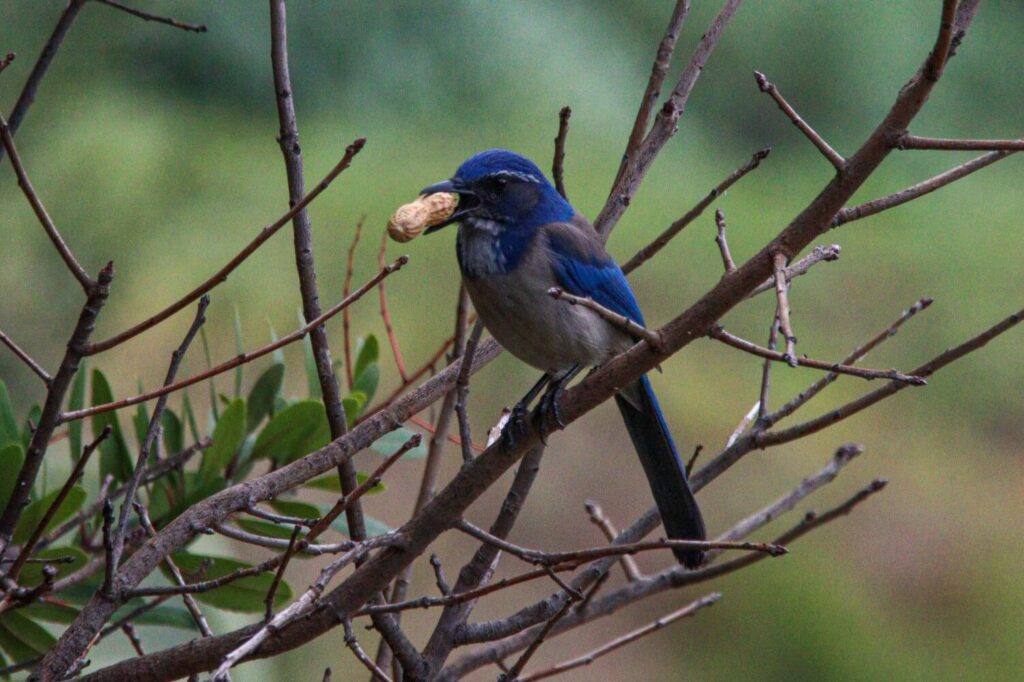
According to McCormack, human intervention, among other factors, helped mold the diverse composition of birds in LA. He said the history of parrots in LA exemplifies this.
“The parrots [were] brought here from Mexico [as] pets. There’s some urban legends around a pet store [burning] down in Pasadena,” McCormack said. “Now, they’re self-sustaining, breeding populations.”
At the corner of Coons and Gilman Road, near the Remsen Bird Hillside Theater, the group looked up, searching for a hawk.
“A raptor,” Campbell said, pointing to the big bird of prey perched in a tall tree near the theater. “Red-shouldered hawk in this pine tree.”
The walk then turned left on Gilman and Bird Road, looping back to Sycamore Glen.
According to McCormack, the migratory period for birds has not yet started, and when it does, Occidental’s campus will see many different birds. However, he said LA’s avian diversity makes it a perennial hotspot for birdwatching.
“Despite the fact that we’re not even in the migration season, there’s still a ton of birds,” McCormack said. “That’s why LA is a birding mecca.”
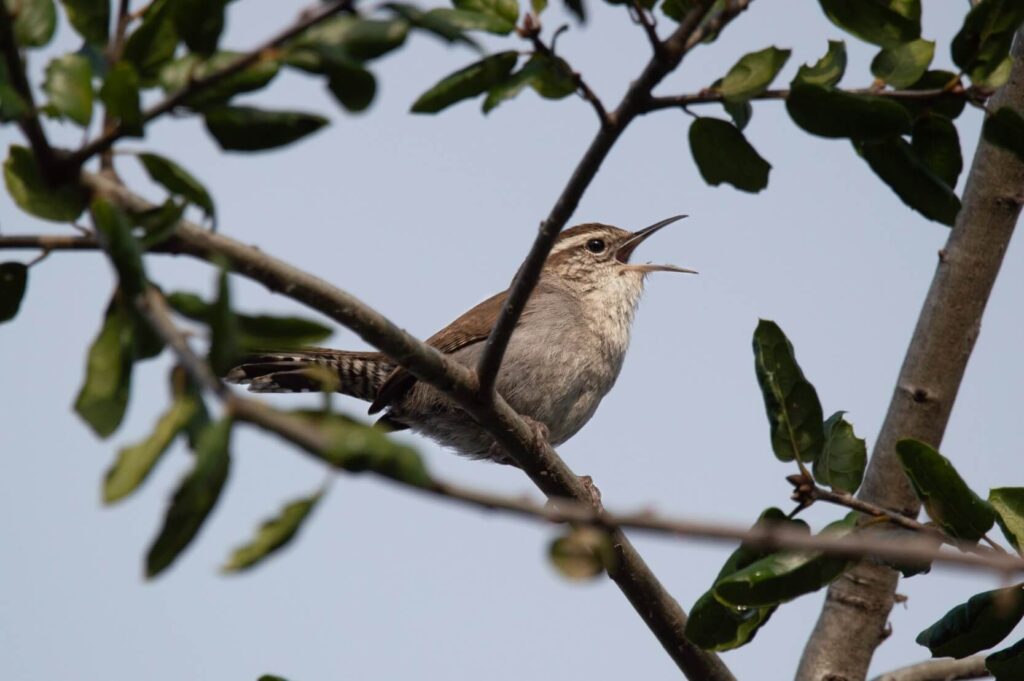
Jenny Wong, a faculty member and the project, outreach and business coordinator of the lab, joined the group on the walk. She said attendance for the walk, which consisted of mostly RSVPs, was average for the event.
Wong said that the walks have some regulars from the community but also that the events always see new attendees, most of whom are novice birdwatchers.
“We have a couple that lives off Campus Road that usually comes to all of our bird walks,” Wong said. “[But] there’s always new people showing up… and a lot of them are beginner birders.”
Wong also said the events are open to the public and will not turn away any attendees unless there are not enough event leaders.
“We don’t typically turn people away unless we have low staff,” Wong said. “We invite everyone. We just make sure there’s enough of us to talk about how to use the [binoculars] or ID birds.”
According to Wong, post-pandemic, bird walks are helping bring people together, while fostering an appreciation for nature.
“Birdwatching has become a meditative activity, especially during the pandemic. It helps people come together, and we have this one goal of looking at birds, and it’s simple, and it’s fun because you learn how to ID resident birds,” Wong said. “It gets people interested in animals, nature, science. It’s good to just get people together, get people interested in birds, but also meet new people.”
Wong said the lab holds around two bird walks per semester, along with other bird-related events that are open to the public.
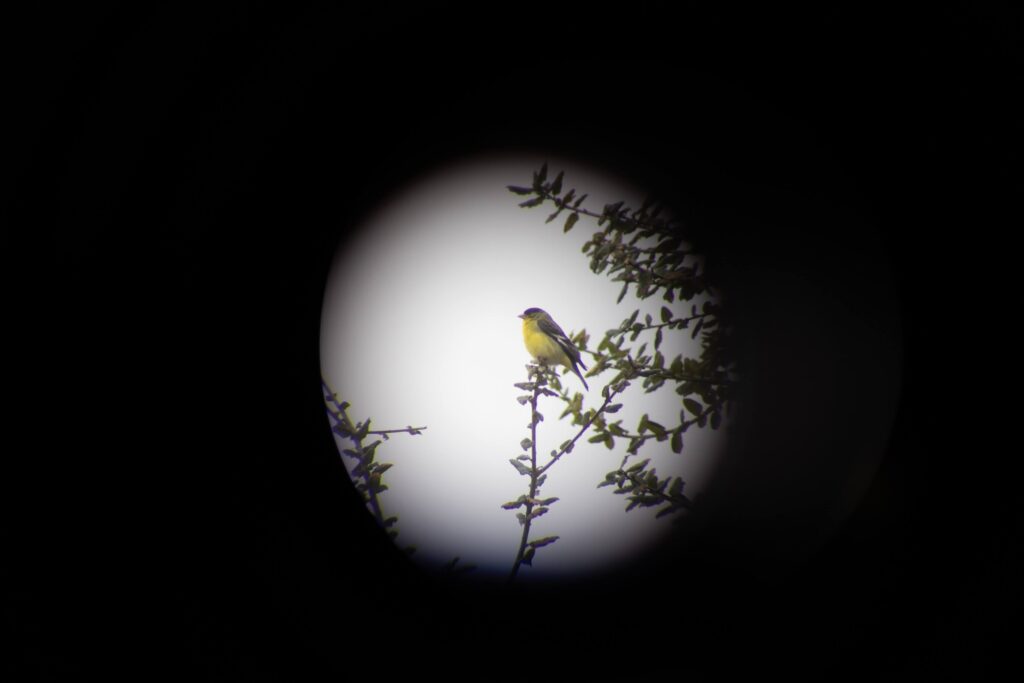
Alana Pizarro ’22, a research assistant at the lab and Oxy alumna, went on the walk as well. She said that, similarly to Campbell, she got into birdwatching through an assignment for a college course. According to her, the experience was accentuated by the limits of the COVID-19 pandemic.
“I took [Professor John McCormack’s] avian biology class, and that was a pandemic semester,” Pizarro said. “I took that class at a time when we were all stuck inside, and part of the class was doing fieldwork and learning to identify birds outside. And so, I think it was the perfect time to take that class because it was such a breath of fresh air.”
Pizarro said the Moore Lab is very extensive in collecting research specimens of birds.
“We have over 2,000 species,” Pizarro said. “65,000 specimens here.”
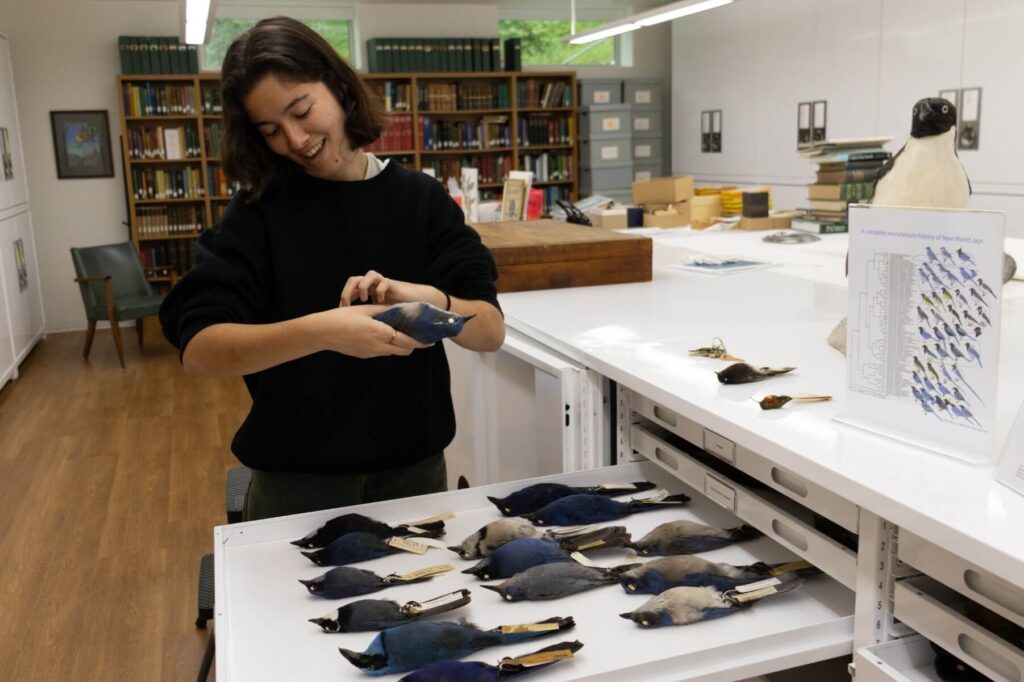
According to Pizarro, the extensive collection helps researchers track trends among bird populations. Pizarro said the Mexican Bird Resurvey Project, a research project that went to areas of Mexico and studied the bird populations, is a good example of this.
“We’ve taken all of these detailed field notes,” Pizarro said. “Who’s still there? Who has disappeared? Has anyone new turned up in these areas? How has the landscape changed? How has the habitat changed? How has the climate changed? Has the space been urbanized?”
According to Campbell, these studies have yielded unfortunate truths about declining bird populations, due to deforestation and competition.
“[A] majority of birds are seeing a loss of abundance,” Campbell said. “It’s a combination of habitat destruction and introduction of a rival species.”
However, Pizarro said some bird species give reason to hope for greater avian abundance.
“Interestingly, a few species’ […] abundance has skyrocketed,” Pizarro said. “Which presents other cool questions.”
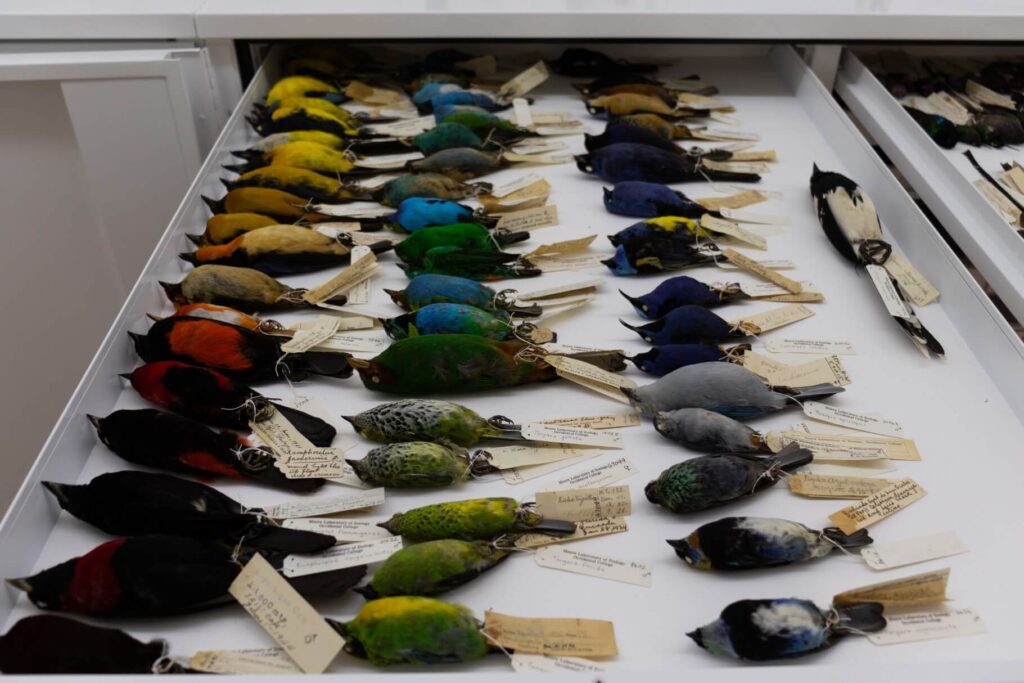
Kelly Shen (first year), one of the founders of the birdwatching club at Occidental, was unable to join the walk. Still, she said she loves birdwatching and appreciates the immense avian diversity at Occidental.
“I see so many different birds here,” Shen said. “You have your raptors. You have your different kinds of songbirds.”
According to Shen, the bird collection at the Moore Lab was part of the reason she chose to attend Occidental.
“When I toured the Moore Lab, I was instantly like, ‘Oh my God, I have to come here because they have this amazing ornithology lab,’” Shen said.
Shen said that, like Wong, she also finds meditative value in birdwatching.
“For a brief moment, it just seems like there’s nothing else but you and the birds,” Shen said. “It’s just kind of like a small, sacred thing to have early in the morning.”
Campbell said he loves sharing his passion for birds and wildlife through the bird walks.
“It’s so awesome to share that with other people and get people excited,” Campbell said.
According to Campbell, his fascination with birding and nature goes beyond a penchant for the sciences; being in nature allows him to reflect on the universal interconnectedness of wildlife, of which humans are a part.
“Whether it’s me and an ant, or me and a bird, or me and a skunk,” Campbell said. “You share something with them. Like these organisms are living alongside us, and it’s so fascinating to be like ‘that’s us.’”
Contact Noah Kim at nkim4@oxy.edu
![]()


































